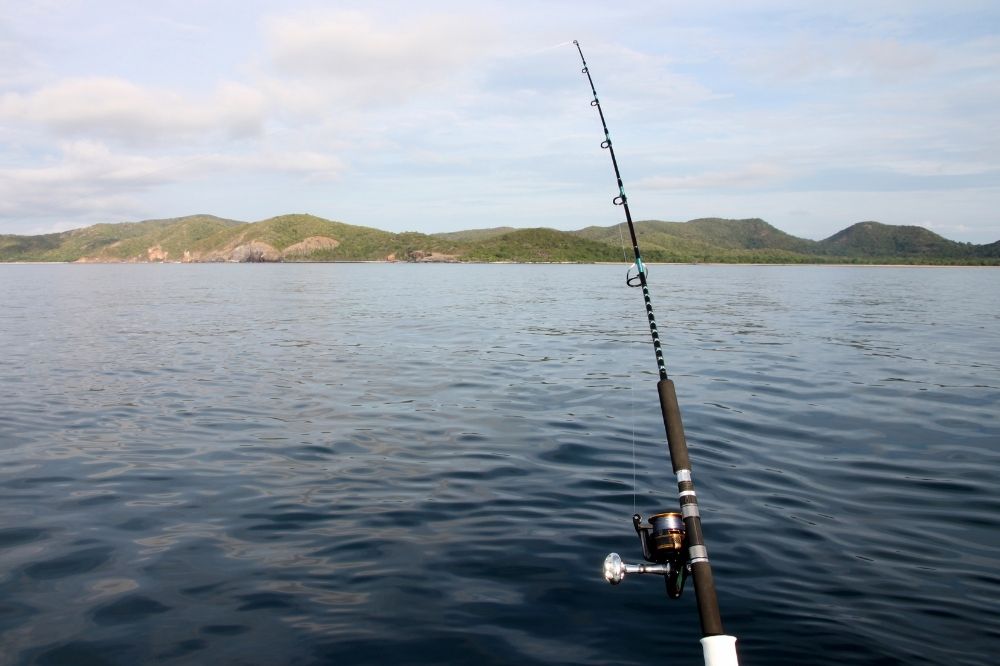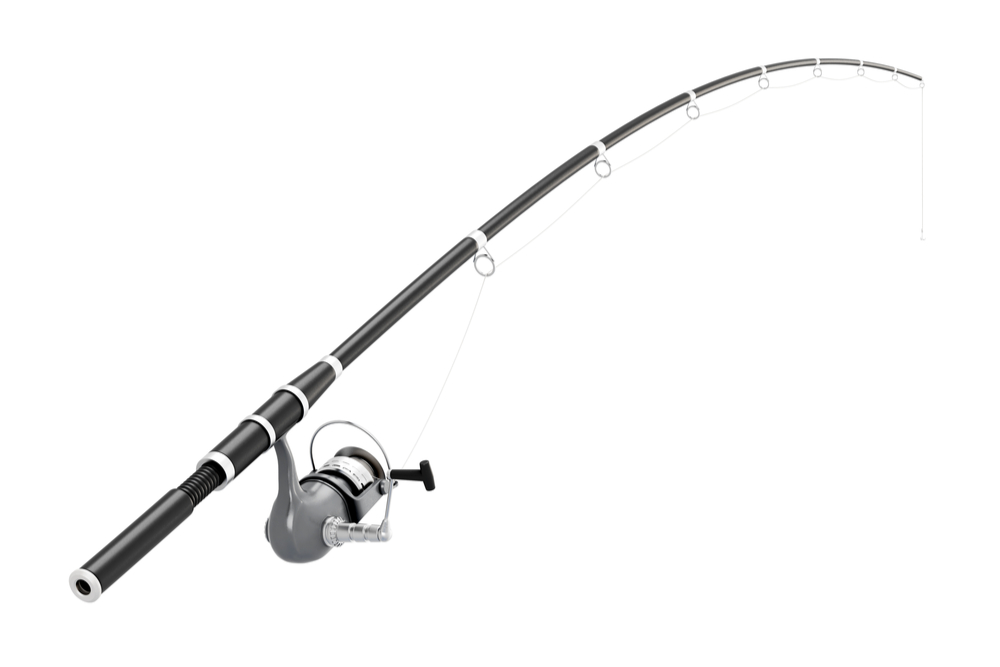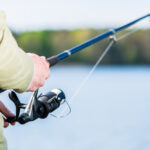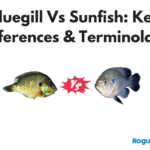Understanding fishing rod weight rating is crucial when determining what rod to use for the type of fish you’re trying to catch. Whether you are new to fishing or have been doing it for a while, many people find confusing all the different types of fishing rods available. It can be difficult to know which one you need to use for certain situations because there are so many on the market. Not only are there lots of different types of rods in 2023, but they also have different weights, which makes the situation even more complicated than it was before. You have to choose the correct rod with the right weight for its destined purpose to have a successful fishing trip.
We know how difficult it can be to choose the right fishing rods for different situations, which is why we are going to explain everything that you need to know about fishing rods, their weights, and all of their different uses. This way, you will know exactly what rod you need to use and when.

What Does Fishing Rod Weighting Mean?
Every single fishing rod will have a weight rating, which might also be called a power rating at times. This rating will be given between ultra light and ultra-heavy, including everything that there is in between. This will tell you how much weight is needed to bend the pole.
The weight or power rating of the fishing rod will refer to its resistance to bending. So, a light rod is likely to bend a lot more than a heavy one, which would be more resistant to bending. This means that it would be better to use a light pole to catch smaller fish and a heavier pole for catching bigger fish.
Choosing the right rod can get a bit difficult at times as there are many different things to think about.
The fishing rod weight rating will be determined by the size of the fish you are hoping to catch, but you will also need to consider the pole’s weight in combination with the weight of the line, the lure, and the size of the reel. This is where things start to get a little bit more complicated.
However, there are some things that you can look out for that will make this experience a little bit easier. For example, each fishing pole will have a series of letters and numbers on it that will help you to know which lines and lures you can use with it. We will explain more about this in the next section.
What Do the Numbers Mean On a Fishing Rod?
The majority of fishing poles will come with some letters and numbers written on them, and these can usually be found next to the handle. These numbers have a meaning that can help you choose the right equipment for your fishing trip.
Usually, the first group of letters and numbers will refer to the rod type, length, number of pieces, and overall weight. This will provide you with all of the information you need to know about the rod itself.
The second set of letters and numbers will determine the recommended line weight you should use with the pole. This is typically given for the monofilament line.
The third set of letters and numbers will typically refer to the recommended lure weight that you can use with the rod. After looking at all of the available information on the rod, you will better understand the setup that you can create.
So, once you have read all of this information, you can use it to find out what the ideal line strength and lure size would be to use in combination with your pole. In addition to this, you can look at the recommended line weight so that you can choose the best fishing reel size to use with your pole.
With all of this information to hand, you will now be able to read and understand all of the numbers and letters on the fishing pole and use them accordingly. However, you will still need to know which pole would work the best for your specific purpose. We will talk you through the different rod power ratings to help give you a better understanding.

What You Need to Know About Fishing Rod Weight Rating
Fishing Rod Line Weight
You should know that a rod’s line rating does not refer to the size of the fish you are trying to catch, but it does refer to the ideal fishing line size that you should use with the rod. By using this information and getting the right equipment, you will have the best possible casting performance, and it will also work well with the sensitivity of the pole.
It is really important to follow the guidelines that are in place for each rod weight class so that you don’t use a line that is too light for a heavy rod. This would make it much more difficult for you to catch fish due to things like lines breaking.
Fish Rod Lure Weight
The lure rating on the rod will describe the ideal lure weight that you should use with the rod to help with your overall performance. Casting a lure too light for the rod power will mean that you can’t cast very far. For the opposite, if you use a too heavy lure, the line could break when you cast it.
Types of Rod Weight
Now that you know what you need to know about fishing rods and weight classifications, we will explain the different weight types and what they are good for. This will help you figure out what type of rod weighting you need for different types of fishing.
Ultra-Light
As you may have already figured out from the name of this one, this is a lightweight rod that is perfect for catching things like panfish and small trout. These rods are very sensitive, which allows you to use them for casting small lures. However, they will not have enough power behind them to handle larger fish.
Light
The next type of rod is the lightweight rod, which is slightly stronger than the previous option. This means they will be strong enough to handle slightly bigger fish, like perch, trout, and small bass.
Medium
These are typically the most commonly used rods, and they can be adapted for a wide range of fishing applications. You can use this type of rod to catch things like smallmouth and largemouth bass, walleye, pike, and lake trout in freshwater.
Medium-Heavy
Medium-heavy rods are perfect for allowing you to catch bigger freshwater fish, like pike, salmon, and catfish. They are perfect for casting heavier lures.
Heavy
These rods are great for trolling rods, and they are specifically designed for big freshwater fish, like salmon, muskie, and bigger catfish.
Extra Heavy
The final weight for fishing rods (learn about the best swimbait rods here) is extra heavy, and these are the heaviest of the rods available. They can be used for catching the biggest fish or for fishing with extra-large lures or rigs.
Which Rod Weight Do I Need?
Now you know what all the different fishing rod weight ratings are good for, you will need to choose the one you need. You can use the above information to help you decide which one you need for your specific fishing purpose and which one best matches the type of fish you plan to catch.
So, if you want to catch smaller fish, one of the lighter rods will be better for you, but if you are looking to catch bigger fish, you should go for a heavier rod. It can often be helpful to have more than one fishing rod prepared for any situation (see the best salmon and steelhead fishing rods here), but if you are focused on catching a certain type of fish, then one rod will suffice.
Sometimes, the type of fishing application you want to use can impact the type of pole you need to use, so this is something else that you should consider.
Fishing Rod Weight Rating Summary
You will need to consider many different things when choosing the fishing rod weight that suits your needs.
There are six different weights to choose from, ranging from extra-light to extra-heavy, and each of these options will be better suited for different purposes. Don’t forget to use the information on the side of the fishing pole to figure out what different equipment you need to use with it.
Once you have this information, you can go ahead and find the reel that you need. With all of this information combined, you will be ready to create the best possible fishing setup.
Below are a couple of helpful videos for additional information about fishing rod weight rating.





